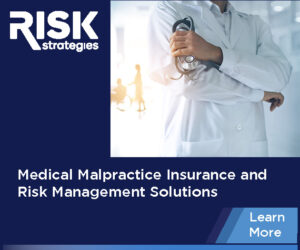By Martha Conway
Thursday, April 14, 2022
Facilities tout state-of-the-art medical imaging technologies

Exciting things are happening in the field of medical imaging, and CRA Medical Imaging is leading the pack. One of the largest diagnostic imaging practices in Central New York, CRA Medical Imaging’s radiologists boast more than 20 years’ experience in the field and proudly deliver the highest level of care to patients with skill sets in specialty areas such as neuroradiology, breast imaging, nuclear medicine, interventional procedures, body imaging and musculoskeletal imaging.
Most of the time, they do it first.
“We strive to stay ahead of the curve, providing the most advanced imaging techniques,” says Medical Director Nicole Taylor, DO. “For example, we were the first in the area to offer PSMA scans and are continuously exploring the newest imaging techniques.”
Clinical quality and service to patients and referring providers are top priorities for the practice, a dynamic that has led CRA to establish locations in Syracuse, Auburn, Fulton and Oswego, where diagnostic testing including ultrasound, x-ray, MRI (magnetic resonance imaging), CT (computed tomography), PET (positron emission tomography)/CT, nuclear medicine, 3D digital mammography and interventional radiology are performed in a friendly, efficient environment.
“What really makes CRA special is the high quality of care that we provide,” Taylor says. “Long before I came to this group, I had heard about CRA’s reputation for providing great service to its patients and providers. Now that I’m a partner here, I see this every day. Taking good care of people is our top priority.”
Taking the lead in PSMA PET-CT
One of the cutting-edge technologies CRA offers is prostate-specific membrane antigen (PSMA) PET-CT. Approved by the Food and Drug Administration Dec. 1, 2020, the radioactive tracer gallium (ga) 68 PSMA-11 may be used in PET imaging not only in men with prostate cancer, but also in men who have been successfully treated for prostate cancer but who are suspected of having had their cancer return due to elevated PSA levels.
“Physicians should refer their patients to CRA because any of our specialized radiologists are only a phone call away,” Taylor says. “We believe that imaging is collaborative, particularly in complex disease processes, and especially when taking care of cancer patients.”
The National Institute of Health’s National Cancer Institute reported in 2020 that PSMA PET-CT accurately detected prostate cancer spread in a large clinical trial conducted in Australia. For some men with prostate cancer, the trial suggests PSMA PET-CT is a more effective approach than traditional imaging modalities — such as CT scans and bone scans — to detect metastases to other parts of the body (cancer.gov/news-events/cancer-currents-blog/2020/prostate-cancer-psma-pet-ct-metastasis).

Phillips Vereos PET/CT Scanner
According to Michael Hofman, MBBS, FRACP, FAANMS, professor of Nuclear Medicine at the Peter MacCallum Cancer Centre in Melbourne, as reported in the March 22, 2020, edition of The Lancet, “…use of PSMA PET-CT was more likely than the standard approach to change the strategy doctors used to treat the cancer…” Hofman says the trial results build on evidence from other studies that PSMA PET-CT is more likely to detect metastases than conventional approaches; early and more accurate test results mean more efficient and effective treatment.
Making diagnostic testing accessible to at-risk patients
CRA Medical Imaging CEO Mary Ann Drumm says the ACR reports that recent changes to the reimbursement rules for low-dose CT lung screening scans are expected to make screenings more accessible to more patients.
“Prior to the changes made by CMS, there was less than a 15% uptake rate for lung cancer screening in general, so we are definitely interested in raising awareness about the availability of low-dose CT scans,” Drumm says. “The goal of screening is to detect disease at its earliest and most treatable stage of lung cancer, particularly in asymptomatic individuals who have a high risk of developing lung cancer.”
She says lung cancer is the leading cause of cancer-related deaths in the United States, and worldwide about 85% of lung cancer deaths occur in current or former cigarette smokers.
In the Feb. 10 edition of the ACR’s Radiology Business, Marty Stempniak wrote that CMS’s final decision drops the eligible age for Medicare beneficiaries to receive lifesaving screenings by dropping the eligibility age from 55 to 50 years old and reducing the tobacco smoking history threshold from at least 30 pack-years to 20. These changes broaden lung cancer screening access for at-risk people.
It is predicted the move will improve health outcomes through earlier detection and close the gap in outcomes disparities, particularly among women, Black men and rural residents, according to Debra Dyer, MD, Chair of the ACR Lung Cancer Screening Steering Committee.
In the March 11 Health Imaging article by Dave Fornell, ACR Principal Economic Policy Analyst Alicia Blakey noted the benefits if expanding screening for lung cancer.
“These changes will expand lung cancer screening to underserved populations, such as African American women and people who do not have a long history of smoking,” Blakey says. “It is now recommended that patients younger than age 55 get screened by Medicare. When we think of Medicare, we think of age 65 and older, but there actually are growing millions of Americans who could benefit from this screening update due to disability status and end-stage renal cancer patients.”
Blakey says 3,593 facilities performed 866,954 LDCT lung screening exams in 2021 alone.

Firefighter Cancer Screening Program
Drumm said cancer also is a leading cause of death among firefighters. Research suggests this population is high-risk for certain types of cancers compared to the general population, as fire settings can contain various hazardous substances, including carcinogenic chemicals from the fires themselves and — in some cases — from the foam used to extinguish fires.
The American Cancer Society and International Association of Firefighters have partnered in an initiative for early diagnosis and cancer treatment for firefighters, and CRA Medical Imaging has teamed up with Hematology Oncology Associates of Central New York and Crouse Hospital to hold local screening centers biannually for firefighters. The slogan is “Get screened as if your life depends on it, because it does.”
CRA Medical Imaging philosophy
CRA Medical Imaging is committed to investing in the latest technologies and regulations and working with referring providers for prompt results and follow-up care.
“Our staff is experienced, welcoming and kind,” Taylor says. “Patients can trust that their exams will be read by sub-specialized board-certified radiologists. We use the latest techniques to cut scan time and maximize patient comfort and satisfaction.”
Their facilities are American College of Radiology-accredited in mammography, CT, nuclear medicine and PET/CT, providing patients a higher standard of imaging quality, care and radiation dose protection.
The Future of Medical Imaging
Those in the imaging field know it holds incredible potential.
“Artificial intelligence is particularly interesting,” Taylor says. “There is still a very important and necessary human aspect of radiologic interpretation, but as technology grows and imaging examinations become more and more important in the diagnosis and treatment of diseases, AI will become an important adjunct to enhance disease detection.”

GE NM 830 Nuclear Medicine System
Taylor said she is proud to tell people she’s a physician at CRA Medical Imaging.
“We often are the first ones in the area to offer certain exams,” Taylor says. “We offer free lung cancer screening to at-risk patients who otherwise wouldn’t have access, and we have become one of the top groups in the world for PET brain imaging in dementia research.”
For more information about CRA Medical Imaging, call 315-234-7600 or visit craimaging.com. For more information about firefighter screening, visit crouse.org/firefighter/ or contact Marianne Kokosenski at 315-472-7504 x. 1349 or mkokosenski@hoacny.com.





